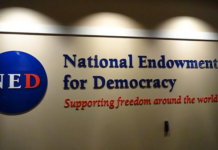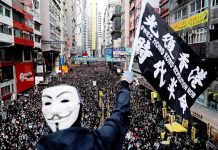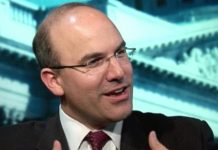
On December 1, the National Endowment for Democracy (NED) hosted a forum by female lawmakers in Georgia who favored its integration into the European Union (EU) and embrace of North Atlantic Treaty Organization (NATO) membership, and who were fiercely hostile to Russia.

One of the panelists, Khatia Dekanoidze, was the former chief of the national police of Ukraine and an adviser to the International Criminal Investigative Training Assistance Program (ICITAP) of the U.S. Department of Justice, which trained Ukraine’s police force with the purpose of trying to stabilize the government that came to power in a 2014 U.S.-backed coup d’état.[1]
Two other panelists at the NED forum participated in protests against the attempt by the Georgian government to enact a law modeled after one in Russia requiring NGOs to register as foreign agents if they received more than 20% of their revenue from foreign sources.
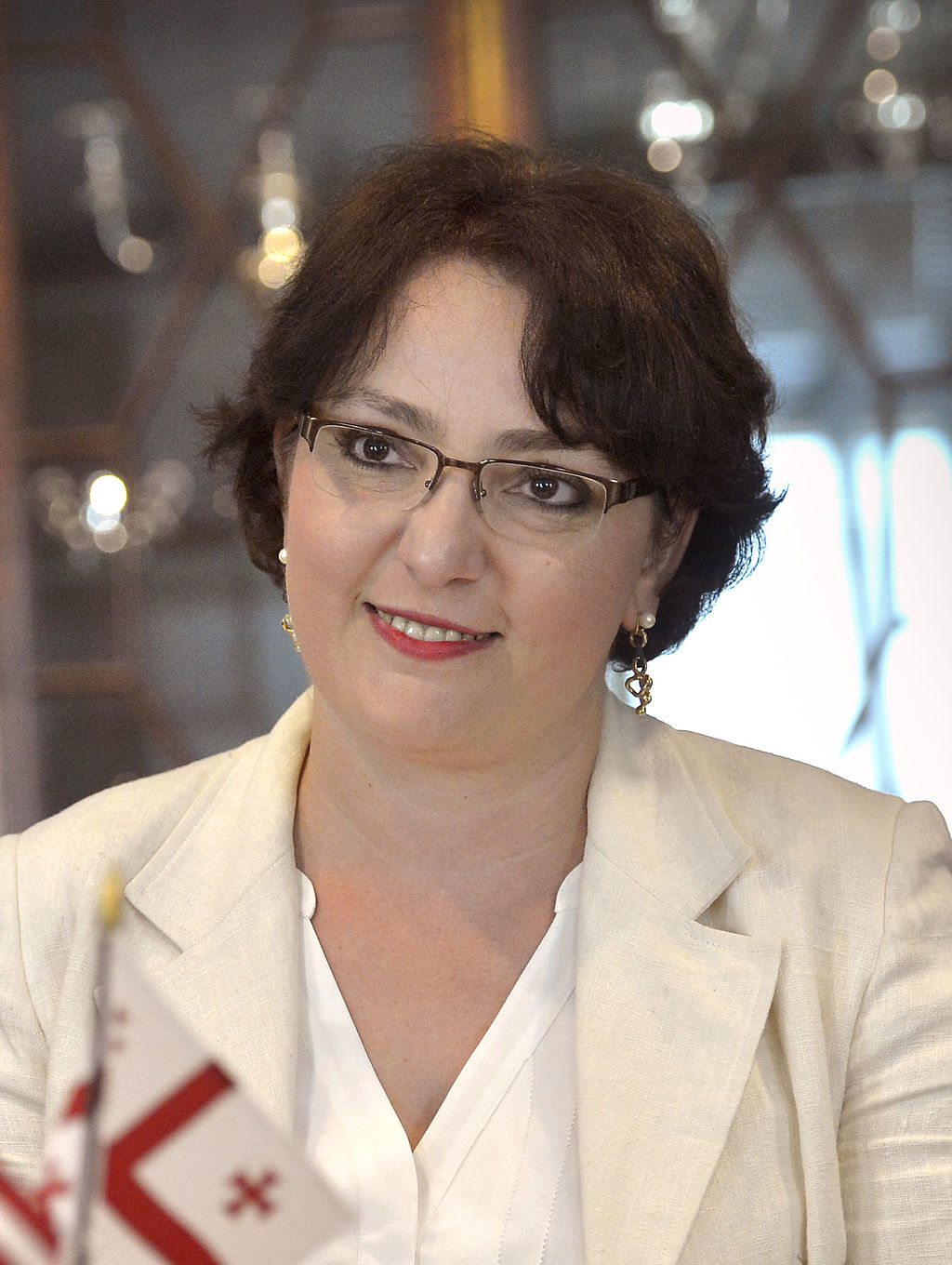
Tinatin Khidasheli, Georgia’s former Defense Minister (2015-2016) and a former World Fellow at Yale, said that the Russian NGO law threatened to revive Stalin-era repression because of its insinuation that NGO workers supporting human rights and democracy were traitors.
Khidasheli and other speakers also a) emphasized that Russian troops were occupying parts of Georgia (South Ossetia and Abkhazia which they took control over following the 2008-09 provoked by Georgia); b) boasted about Georgia’s support for the war in Ukraine including by sending troops; and c) thanked the U.S. for helping them to fight for Georgia’s Euro-Atlantic future, which the Georgian people supposedly wanted.
The latter claim was put in question when an audience member pointed out that only about 1,000 Georgians had come out in the capital, Tbilisi, to protest the NGO law and none in any regional cities, and that the Georgia Dream Party, which has sustained close ties to Russia, was expected to win Georgia’s 2024 parliamentary elections.
Georgia As Focal Point for NED
The NED is a CIA offshoot founded in the 1980s to promote pro-U.S. propaganda, including by publicizing human rights abuses—both real and imagined—of governments that the U.S. targets for regime change.
In 2021, the NED, invested $2,3 million in Georgia, including in civil society groups that were involved in the NGO law protests.
Georgia is a key focal point for the NED as a front-line state in the new Cold War. The failings of the spring-summer counteroffensive in Ukraine and Russian success in reclaiming parts of eastern Ukraine have led to a more aggressive approach toward countries like Belarus and Georgia that remain in the Russian orbit.
With the end of the Cold War, U.S. political elites saw a great opportunity to gain control over Eastern Europe and Central Asia and to decapitate Russia once and for all, preventing the possibility that it could ever again challenge U.S. global hegemony.
The government in Georgia, however, run by the Georgia Dream Party, has sought to retain good relations with Russia while balancing East and West.

Kit Klarenberg wrote in The Grayzone that, “for the neoconservative establishment, [Georgia Dream’s] true sin is being insufficiently supportive of the Ukraine proxy war. Thus Ukrainian elements are set to be involved in a possible color revolution [within Georgia]. If such an operation succeeds, it would open a second front in that war on Russia’s Western flank.”
Klarenberg’s article in The Grayzone was entitled “A Maidan 2.0 color revolution looms in Georgia.”[2] It detailed the detention by Georgia’s security services of three staffers with the Serbian-based Center for Applied Nonviolent Actions and Strategies (CANVAS), a U.S. government-funded organization with close CIA ties, for allegedly assisting opposition elements to prepare a regime-change operation.

In September, Georgian security officials warned about “a coup à la Euromaidan [2014 Ukraine coup]” allegedly being prepared in Georgia, led by ethnic Georgians working for the Ukrainian government: Giorgi Lortkipanidze, Kyiv’s deputy military intelligence chief; Mikheil Baturin, the bodyguard of former President Mikheil Saakashvili; and Mamuka Mamulashvili.
Mamulashvili has been implicated in a false-flag massacre pivotal to the February 2014 Maidan coup, which brought shooters equipped with sniper rifles to Maidan Square to “sow some chaos” by opening fire on crowds with the intent of blaming pro-Russian President Viktor Yanukovych’s security forces.[3]
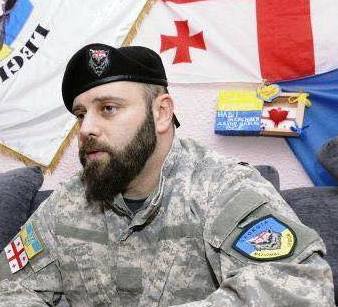
According to Klarenberg, Georgian officials said that they had uncovered evidence that young anti-government activists were undergoing training near Ukraine’s border with Poland to enact a similar scheme, which would feature deadly bombing during riots expected to erupt after Georgia was granted EU membership status. (an EU Commission voted to grant that status in early November).[4]
Blueprint for Regime Change
The State Security Service of Georgia (SSSG) said in a statement—which CANVAS said was untrue—that young activists and a “rather large group of persons of Georgian origin” now fighting in Ukraine are currently being “trained/retrained in the vicinities of Poland-Ukraine state border in a scheme being implemented by the CANVAS operatives,” whose goal was to topple the government in a bloody coup d’état.
According to thr SSSG, the plot was to involve the creation of a “tent city” in the capital, “erection of barricades on the central avenues and near strategic objects of Georgia,” occupation and seizure of government buildings, “as well as other illegal actions containing elements of serious provocation.”
The SSSG said further that “an explosive device, which the organizers of criminal acts intend to detonate, w[ould] be placed in a pre-selected tent within the territory where the rallies organized by Giorgi Lortkipanidze and Mikheil Baturin w[ere to] take place, namely in the so-called “Tent city.”
The explosion would in turn cause casualties among the peaceful population participating in the protests and the representatives of the law-enforcement agencies,” with “indiscriminate shooting between the law-enforcement officers and protesters creating a solid ground for further civil confrontation.”
Tried and True Methods
The SSSG’s description fits a blueprint for regime change that has been successful before.
Klarenberg points out that CANVAS evolved out of Otpor!, a rebellious youth movement in Yugoslavia that staged protests which helped oust socialist Slobodan Milošević in the late 1990s following the U.S. bombing of Serbia.
Otpor! received financial support from the NED, which financed trade unions and media networks that were against Milošević and groups that organized conferences bringing anti- Milošević activists together and that promoted the teachings of regime-change gurus, Robert Helvey and Gene Sharp.
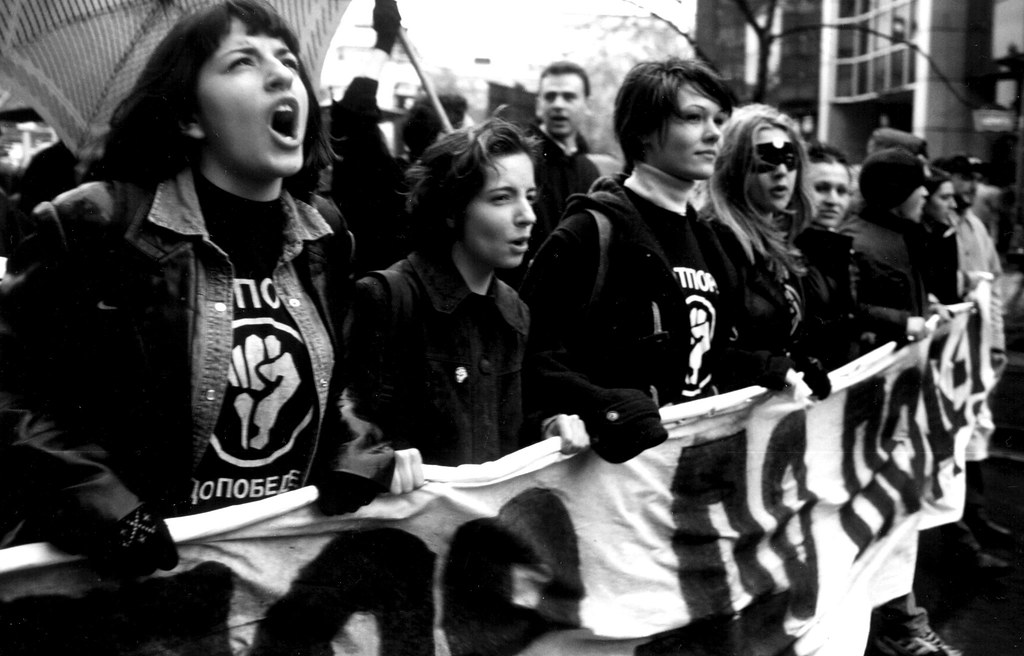
![[Flag]](https://covertactionmagazine.com/wp-content/uploads/2023/12/flag.gif)
Once Milošević was removed in October 2000, Otpor! leaders founded CANVAS, and began exporting their revolutionary model elsewhere, including Georgia in 2003. There, they created Kmara, an Otpor! clone that received sizable NED funding.
Klarenberg writes that Kmara was instrumental in the downfall of Georgia’s long-time pro-Russian leader Eduard Shevardnadze following the November 2003 election.
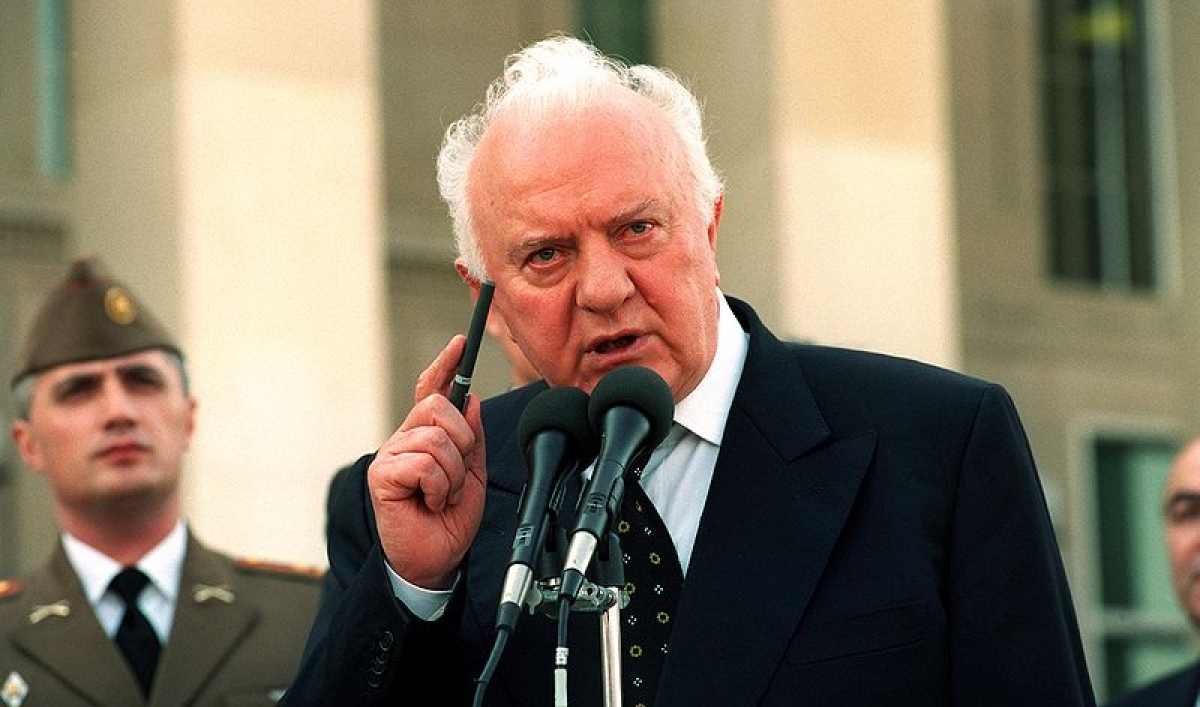
It built on its regime-change template in the so-called Orange Revolution triggered the following year in Ukraine, which brought to power a pro-Western leader, Viktor Yushchenko, who declared World War II-era Nazi collaborator Stepan Bandera a hero of Ukraine.
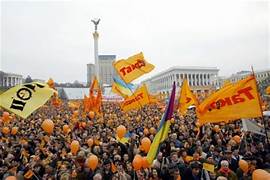

Leaked emails exposed how Otpor! leader and CANVAS founder Srdja Popovic worked closely in secret with Stratfor, a private security firm known as “The Shadow CIA,” and had produced a guide on how to unseat Venezuelan President Hugo Chávez.
One Stratfor analyst tellingly said that CANVAS’s mission was “basically [going] around the world trying to topple dictators and autocratic governments [ones that the U.S. does not like]. They just go and set up shop in a country and try to bring the government down. When used properly, [they are] more powerful than an aircraft carrier battle group.”
-
Dekanoidze was trained at the U.S. intelligence-linked RAND Corporation. She was accused by Georgian Prime Minister Irakli Garibashvili of overseeing torture of prisoners while she was rector of the Georgia police academy under Mikheil Saakashvili, Georgia’s former President, who was closely allied with the U.S. and is currently in jail because of his involvement in a host of crimes. ↑
- Maidan 1.0 was the color revolution in Ukraine that replaced the popularly elected pro-Russian leader Viktor Yanukovych regime with the pro-Western regime that provoked a war with Russia and has brought ruin to Ukraine. Kit Klarenberg, “A Maidan 2.0 color revolution looms in Georgia,” The Grayzone, October 6, 2023, https://thegrayzone.com/2023/10/06/maidan-color-revolution-georgia/
-
See Ivan Katchanovski, “The ‘Snipers Massacre’ on the Maidan in Ukraine,” September 2, 2015, https://papers.ssrn.com/sol3/papers.cfm?abstract_id=2658245 ↑
-
One of the motives for the coup would be to free Georgia’s former leader, Mikheil Saakashvili, who was convicted for ordering brutal attacks on political rivals, and helping one of his ministers cover up a murder they had personally directed, from prison. ↑

Jeremy Kuzmarov holds a Ph.D. in American history from Brandeis University and has taught at numerous colleges across the United States. He is regularly sought out as an expert on U.S. history and politics for radio and TV programs and co-hosts a radio show on New York Public Radio and on Progressive Radio News Network called “Uncontrolled Opposition.”
He is Managing Editor of CovertAction Magazine and is the author of six books on U.S. foreign policy, including Obama’s Unending Wars (Clarity Press, 2019), The Russians Are Coming, Again, with John Marciano (Monthly Review Press, 2018), Warmonger. How Clinton’s Malign Foreign Policy Launched the U.S. Trajectory From Bush II to Biden (Clarity Press, 2023); and with Dan Kovalik, Syria: Anatomy of Regime Change (Baraka Books, 2025).
Besides these books, Kuzmarov has published hundreds of articles and contributed to numerous edited volumes, including one in the prestigious Oxford History of Counterinsurgency .
He can be reached at jkuzmarov2@gmail.com and found on substack here.


